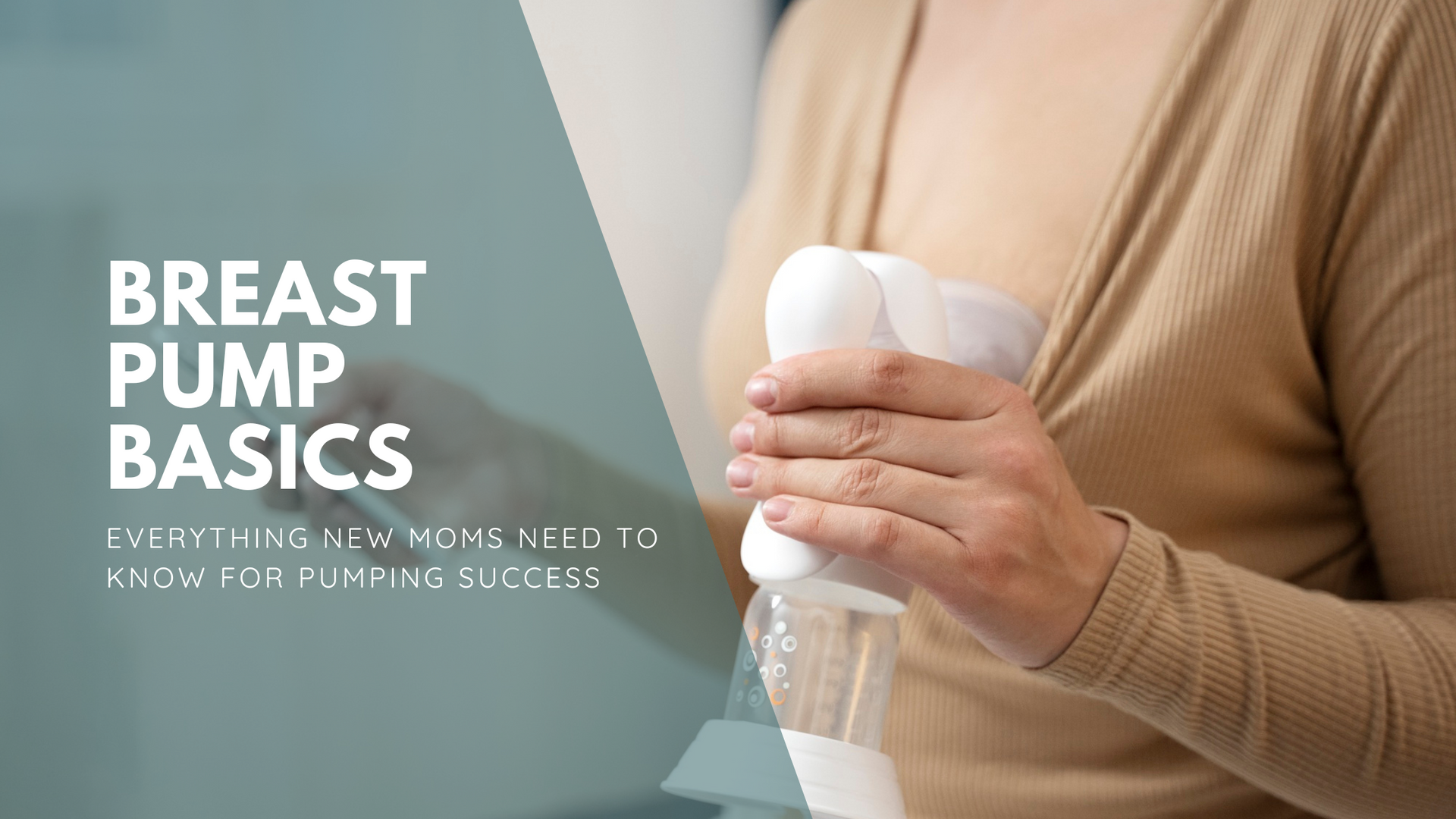Breast Pump Basics: Everything New Moms Need to Know for Pumping Success
Breast Pump Basics: Everything New Moms Need to Know for Pumping Success

If you're a new mom venturing into the journey of pumping, it can feel like a lot. Whether you're planning to pump exclusively, supplement breastfeeding, or prepare for a return to work, understanding the ins and outs of breast pumps can make all the difference. As certified postpartum doulas, we've guided countless moms through their pumping journeys, and we're here to share the essentials to help you succeed.
Here's everything you need to know to pump with confidence, create a smooth routine, and make your pumping experience as stress-free as possible. Our goal is to ensure you feel informed and prepared for your pumping journey.
1. How To Choose The Right Breast Pump For You
Not all breast pumps are created equal. The one that's perfect for a mom heading back to work might differ from one designed for occasional use or for a parent exclusively pumping.
Types of breast pumps:
- Electric pumps: Great for frequent use, with single or double-pump options for efficiency.
- Manual pumps: Compact and affordable, ideal for occasional use or travel.
- Wearable pumps: Hands-free options like the Willow or Elvie are perfect for on-the-go moms.
- Hospital-grade pumps: Excellent for building supply or exclusive pumping.
Pro tip: Check with your insurance provider - many plans cover the cost of a breast pump! We like to recommend the website
Aero Flow or
Edgepark to check for coverage with your individual plan.
2. Setting Up Your Pumping Space
Where you pump plays a huge role in your experience and overall milk output. Seriously. Creating a comfortable and calming space can make a huge difference, promoting relaxation and effective milk flow. The less stressful the area, the more milk you'll produce!
What to include:
- A comfy chair with armrests or some solid pillows to support you.
- A clean, quiet space with minimal distractions.
- Essentials like a water bottle, one-handed snacks, and a favorite show or podcast to relax.
- Your pump kit complete with correctly fitted flanges (more on this below).
Make it yours: Some moms find it helpful to keep a picture of their baby nearby or use baby's scent (a blanket or onesie) to encourage let-down- kind of cool, right?
3. Mastering the Technique: Finding Your Rhythm
Pumping takes practice at first, but here's how to make it work for you:
- Start with a let-down mode: Most electric pumps have a setting to mimic a baby's initial fast suckling, which triggers milk flow.
- Adjust the suction level: Use a setting that's effective yet comfortable to avoid discomfort or nipple damage.
- Establish a routine: Pumping at consistent times signals your body to produce milk. Aim for every 2-3 hours if you're exclusively pumping or regularly while at work. As your baby gets older and supply is more established, you can lessen this time.
Don't worry if it's slow at first: Milk supply increases with time and consistency, so trust the process!
4. Getting the Right Flange Fit
If pumping feels uncomfortable or you're not getting much milk, your flange size might be the culprit.
- Your nipple rubs against the sides of the flange.
- Your areola is pulled into the flange excessively.
- Pumping feels painful or inefficient.
How to measure: Most brands include a sizing guide to help you determine the correct flange size for your nipple diameter.
Pro tip: Many moms benefit from trying different sizes or materials (like silicone flanges) for optimal comfort.
5. Pumping and Storing Milk Safely
Proper storage is key to ensuring your milk stays fresh and safe for your baby.
Milk storage guidelines:
- At room temperature: Up to 4 hours.
- In the fridge: Up to 4 days.
- In the freezer: Up to 6 months (or 12 months for deep freezing).
Tips for safe storage:
- Label each bag or bottle with the date and time pumped.
- Store milk in small portions (2-4 oz) to reduce waste.
- Use dedicated breast milk storage bags to avoid leaks or contamination.
6. Maintaining Your Pump and Supplies
Regular cleaning and maintenance ensure your pump stays in top shape and your milk stays safe.
Daily cleaning tips:
- Wash all pump parts that come into contact with milk using warm, soapy water after each session.
- Sterilize parts at least once daily using a sterilizer, boiling water, or the dishwasher (check your pump's instructions).
Check for wear and tear: Replace parts like valves and membranes regularly—they can affect suction and efficiency over time.
7. When to Call in the Experts
Sometimes, a little extra guidance can make all the difference.
Signs you might need support:
- You're struggling with supply or painful pumping.
- You're unsure about your pumping schedule or routine.
- You need help navigating pumping while breastfeeding.
A postpartum doula or lactation consultant can provide personalized advice to make pumping work for your lifestyle.
Let Us Help You Thrive
Navigating pumping doesn't have to feel overwhelming. At
Bountiful Doulas, we offer personalized postpartum support, including lactation education, newborn care, and practical tips to make your pumping journey a success. Whether you need help finding the right pump, mastering your technique, or balancing pumping with life as a new mom, we're here to provide the support you need.
FAQs
Q: How often should I pump if I'm exclusively pumping?
A: Aim to pump every 2-3 hours, mimicking a baby's feeding schedule, to maintain supply.
Q: Can I mix milk from different pumping sessions?
A: Yes, but only after both batches are cooled to the same temperature in the fridge - mixing milk of different temperatures can increase the risk of bacteria.
Q: How can I increase my milk supply while pumping?
A: Pump frequently, ensure a proper flange fit, stay hydrated, and consider skin-to-skin time with your baby to stimulate let-downs. Read more on our blog about the real galactogues for other tips and tricks!
Q: Should pumping hurt?
A: Pumping should not be painful. If it is, check your flange size and suction settings or consult a lactation expert.
Q: What's the best pump for working moms?
A: Electric or wearable pumps like the Spectra S1 or Elvie are great for both efficiency and portability depending on your needs.
Need more help?
Reach out to us today and make your postpartum experience feel as supported as possible. Let's get you pumping with confidence!











